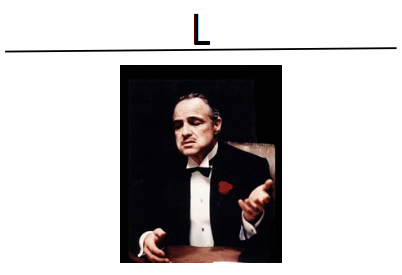Minos 2017 was held at Birmingham City University on April 22nd and 23rd. We enjoyed a great weekend. This years primary organisers were Ian Butterworth and David Hannaford. They could not have pulled it off without the assistance of Chris Evans and Tony Wilcox of BCU. Thank you all.
The presentations ran like this:
Duncan Louttit: Background Challenge.
In case we got bored, Duncan gave us all a set of cryptic pictorial puzzles. Way beyond me in most cases. Here is a sample. He told us what it meant and I still cannot remember :
:
Peter Harrison: Contest Roundup
[Facebook Album] – you do not need a Facebook Account
This pictorial look at interesting mice seen at the contests held in Japan, Taiwan and the USA tries to highlight some of the latest developments in these small robots and also serves to showcase the new and interesting creations.
David Hannaford: A BBC Micro:bit mouse
The new BBC Micro:bit board is a small, powerful ARM-based processor with a very easy to use cloud based development cycle. It has just enough resources for a small robot like a wall follower. David explains how he has used these boards with school-based robot builders
Bernard Grabowski: 3D printing Tips
Bernard is a keen user of his 3D printer, making all manner of robot parts. Today, he passed on a few tips about getting a good finish with acetone vapour. unfortunately for you, this was a practical demonstration so there are no slides.
Stephen Pithouse: Micromouse Data Collection and Calibration.
Getting reliable telemetry from a robot can be extremely useful when setting up and testing its performance. In this presentation, Stephen brigs us up to date with his techniques for sending data from the mouse to his PC over a Bluetooth link.
Duncan Louttit: Si1120 Range Sensor
No it is not the answer to the picture puzzle above. The Si1120 is a relatively new optical range sensor. Designed for proximity detection in mobile phones, it looks like a very promising range sensor for a small robot like a wall follower. The output is a simple pulse with a duration proportional to distance. Duncan describes his experience with this device.
David Otten: Update on Jehu
Jehu is David Otten’s unique line following robot. Using a single line sensor, looking down on the line from above, David’s chariot should greatly reduce the rotational inertia that can make building a high-speed line follower problematic. Here, David describes recent developments and some of the instrumentation available on Jehu. (Which was ridden furiously)
Peter Harrison: Living on the Edge
One of the most important tasks that the sensor system in a micromouse must perform is detecting the transition from wall/post to no-wall. This falling edge in the sensor signal tells the mouse where it is and how it is aligned and must be reliable, robust and accurate if the turns are to be fast and safe. There are some surprising difficulties in this task and Peter looks at some ways to get the job done.
Ken Hewitt: Mouse building developments
Ken is an experience builder of mice. This year he turns his attention to sensors. He looks at the basic requirements, types of sensor and some very interesting ways to test the sensors on an automatic test rig. A footnote on ultra capacitors hints at some interesting possibilities for powering robots.
Rob Probin: Mouse emulation
There is no doubt about it – unless you are very dedicated and have lots of time, mouse development can be more than a little tedious. The need to constantly load code/parameters into a mouse, put it in the maze, run it, examine the results, rinse and repeat gets old pretty quickly. Emulation on the desktop ca ave a lot of time. Sure, you need to invest in the emulation but that investment will soon be repaid. Rob describes his approach.
David Hannaford: Other UK contests
In the UK alone there are a surprising number of robot-based contests. The real surprise is not that there are lots of them so much as how poorly they are publicised. David presents a list of larger, regular events. Go and visit one. It’ll be fun.
Duncan Louttit: Making line follower courses
Tempting though it is to just show you another cryptic clue and let you guess what this is about . . . If you want to run contests at a variety of venues, and at short notice, the contest environment can be a bit of a challenge. Even an apparently simple event like line follower needs a flat surface with good contrast between the line and the surrounding floor. Also, for a decent challenge, the course needs to be reasonably large and varied. Duncan has come up with a simple-to-make line follower course that can easily be carried around and set up by one person for training, practice, or contest.
Harjit Singh: Gyro Analysis
All the way from the American Northwest, Harjit joined us via Skype. (hank you for getting up early). The gyro has become an essential component in many small robots and, without it, the current generation of micromouse robots would be completely unable to negotiate the maze at any real speed. In his presentation, Harjit tells us about some of the important statistical features of the gyro with examples from a couple of popular types. He also offers guidance on performing the analysis and how to interpret and make use of the results.
There ended a fascinating day. It is always good to catch up with everyone and find out what they are up to. Many thanks again to the organisers, the staff at BCU and, of course, the presenters without whom the day would be nothing but chat and coffee. Although that would have been good too.
I will put the contest results in a separate post.
Very interesting, thank you.